Many people see Japan as a faraway land steeped in history and culture. Within Japan, the northernmost island of Hokkaido can also seem distinct and distant, closer geographically to Russia than Tokyo. But those of us that live here find that this wild and natural island combines the best of Japanese culture and the great outdoors.
Why travel to Hokkaido?
Travel Tips
By Richard

While many things make Hokkaido special, these are the things that set it apart and make it a must-visit destination. These are also the reasons that I got drawn in when I first came here. And they are the reasons I, and many of the other nature lovers and outdoor enthusiasts I work with, call Japan’s northern island home.
The Scenery #
It is the natural landscape of Hokkaido that makes the first impression on visitors. Whether it’s snow-covered volcanoes at the end of the road or rugged cliffs rising out of the sea, there is seemingly a breathtaking view around any corner.
One of my favourite views in all of Hokkaido is Mt. Rishiri. The 1721m peak rises out of the sea off of the northern tip of Hokkaido. Whether you are looking from the mainland, neighbouring Rebun island or from the coast of Rishiri itself, it is an unreal sight.
You would be hard-pressed to find somewhere with a landscape as diverse as Hokkaido. There are vast alpine vistas in the Daisetsuzan mountains, rugged untouched coastlines around the Shiretoko peninsula and many clear caldera lakes, such as Lake Toya.
There is also very little development in the wilderness areas of Hokkaido. Many rivers remain natural and undisturbed, while the mountains have only a few huts dotted here and there. You don’t have to travel far to feel like you are a world away from civilization.
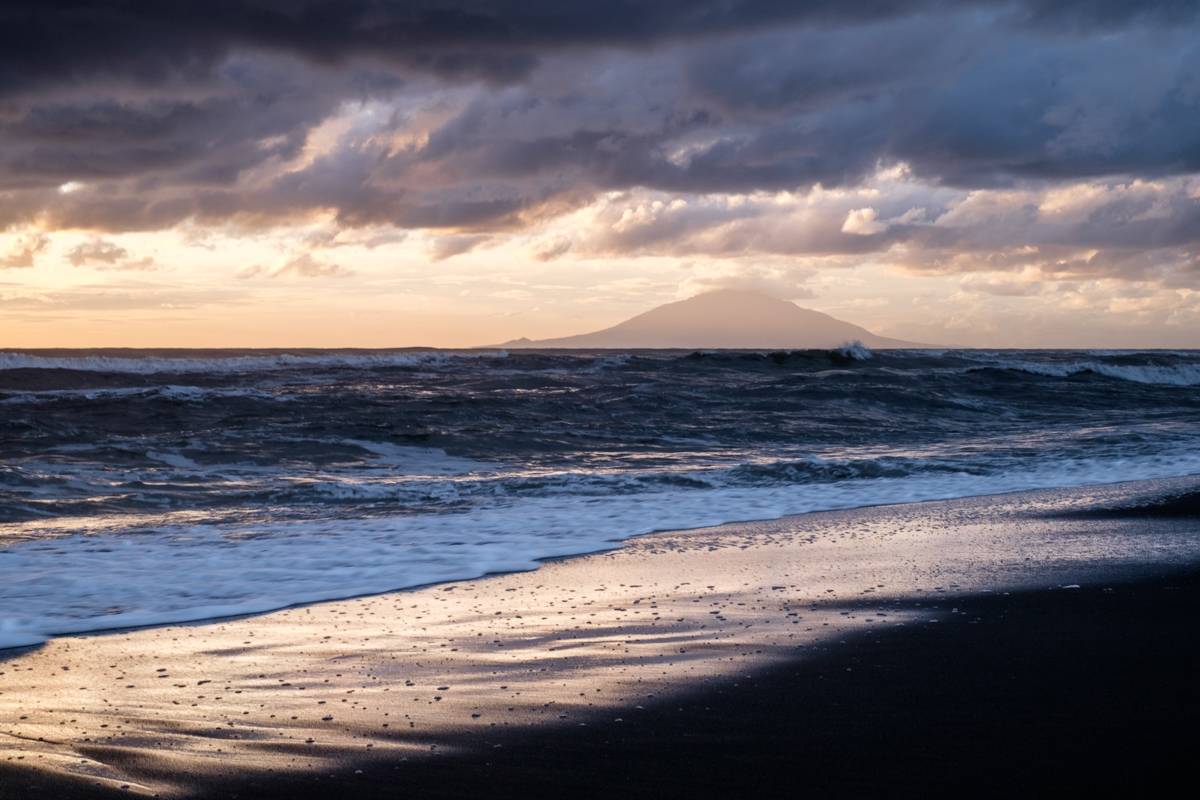
Views of Mt Rishiri from across the water 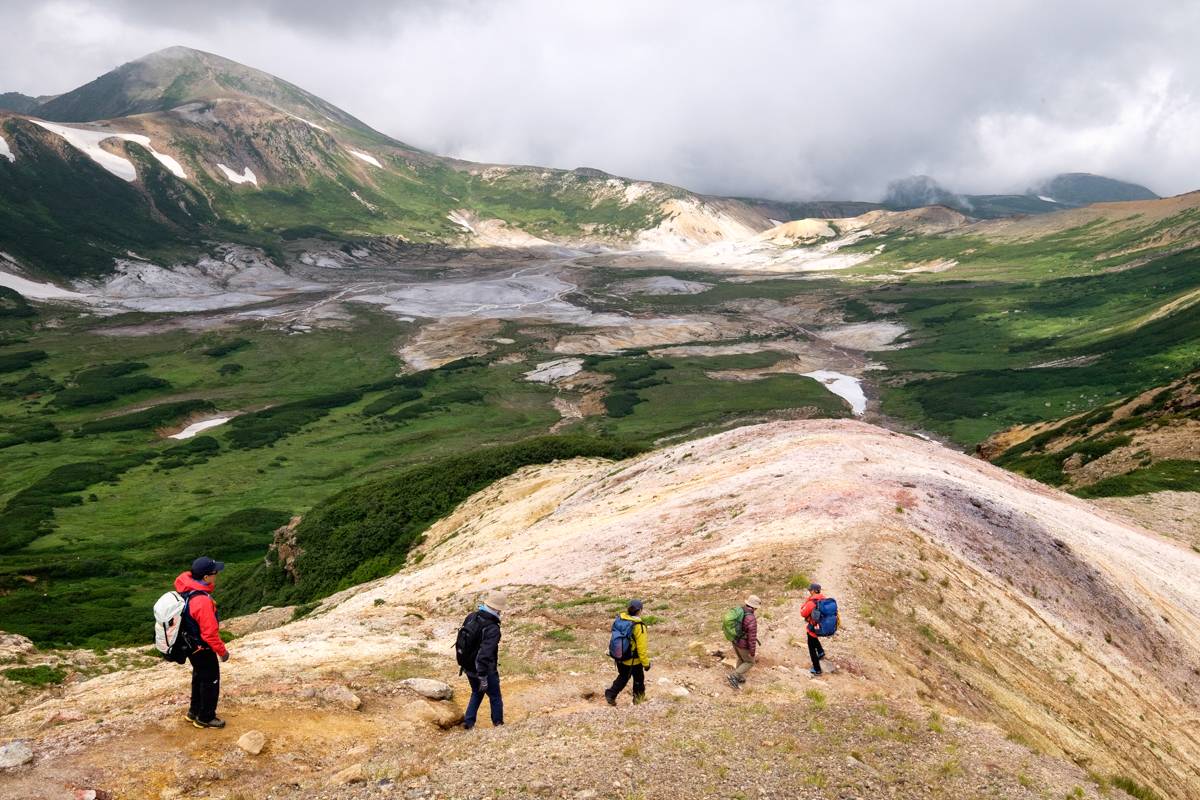
Hiking on the rim of Ohachidaira caldera. 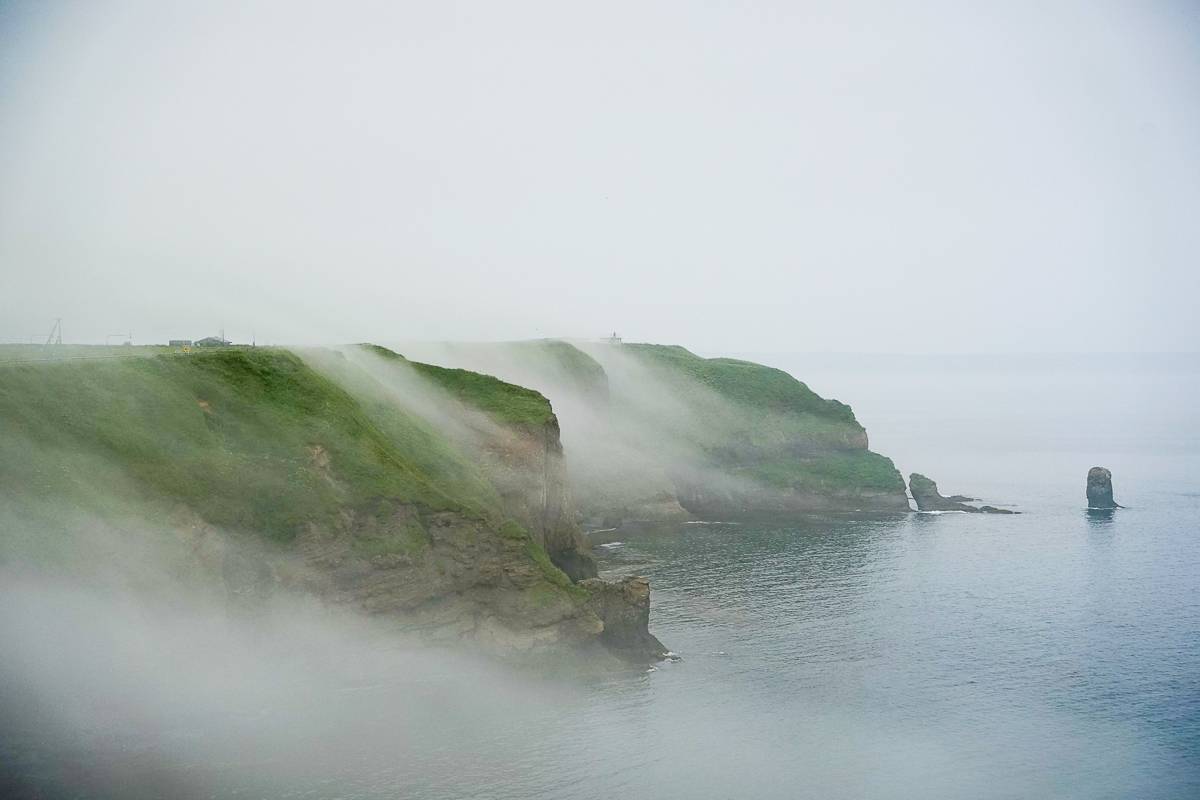
Misty Cape Kiritappu 
Rural cycling around Lake Toya
Hokkaido’s National Parks
There are seven national parks and five quasi-national parks in Hokkaido with over 1 million hectares (2.5 million acres) of land protected, these parks are as diverse as the scenery. The Daisetsuzan National Park encompasses the mountains in the centre of Hokkaido and is Japan’s second largest national park. Kushiro-Shitsugen national park in the east of the island protects the largest wetland in Japan, as big as Washington D.C. The newly minted Hidakasanmyaku-Erimo-Tokachi National Park in southern Hokkaido is now the largest national park in Japan.
Activities in Hokkaido #
Enjoying the landscape of Hokkaido isn’t just about seeing it from afar. You can dive headfirst into the outdoors with a huge variety of outdoor activities.
Snowsports in Hokkaido
For many, plentiful light snow is the first thing that comes to mind when they think about Hokkaido and skiing was what first brought me to the island. The many ski resorts around the island are a mecca for international skiers and snowboarders who flock to the island to ride the deep powder snow.
The snow isn’t just for the thrill-seekers. Donning a pair of snowshoes allows you to explore the snow-covered landscape at a more gentle pace. Thick sasa bamboo grass usually confines you to the trails in summer. In winter the winter snow buries the bush, opening up the opportunities to explore off the beaten path.
A great example of this is snowshoeing along the Lake Mashu crater rim, which we do on our 7 Day Japan’s Far East Wild Winter Tour. In summer you can only see the lake from the designated viewpoints, but in winter we can follow the local deer along the ridgeline and see the Lake from a different angle.
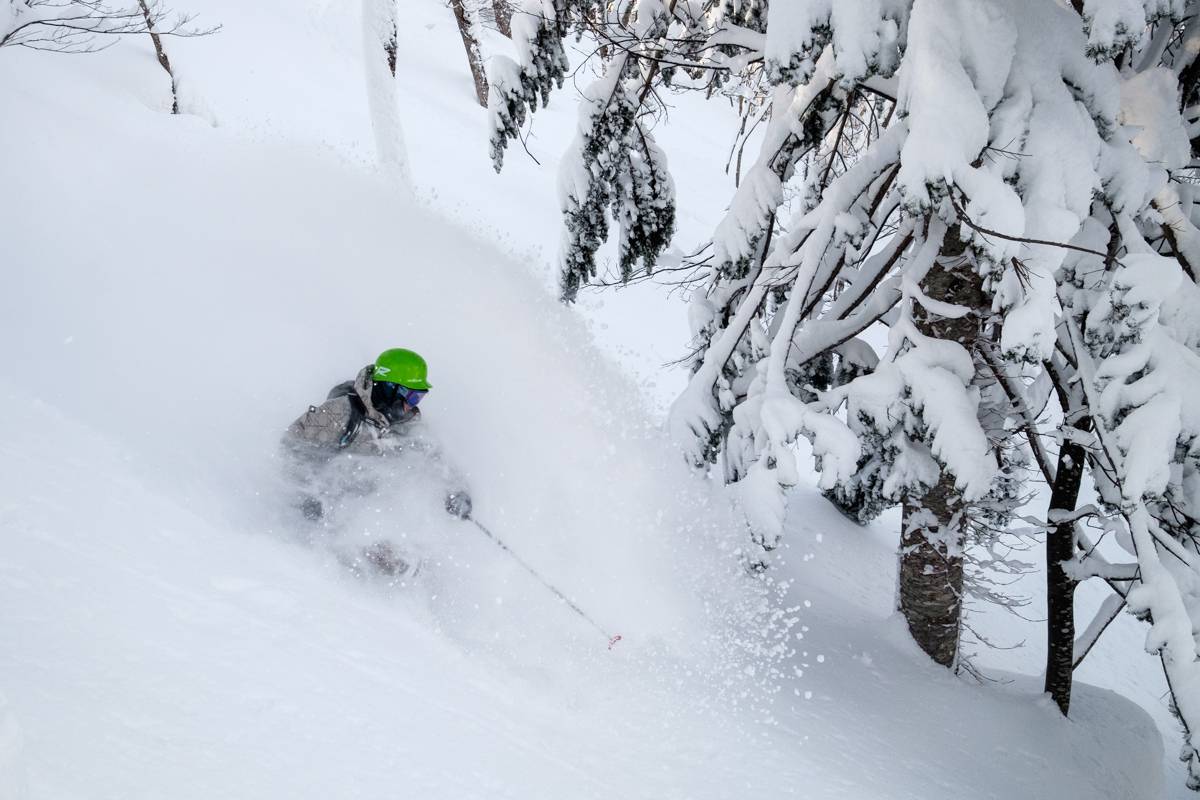
Powder skiing in Hokkaido 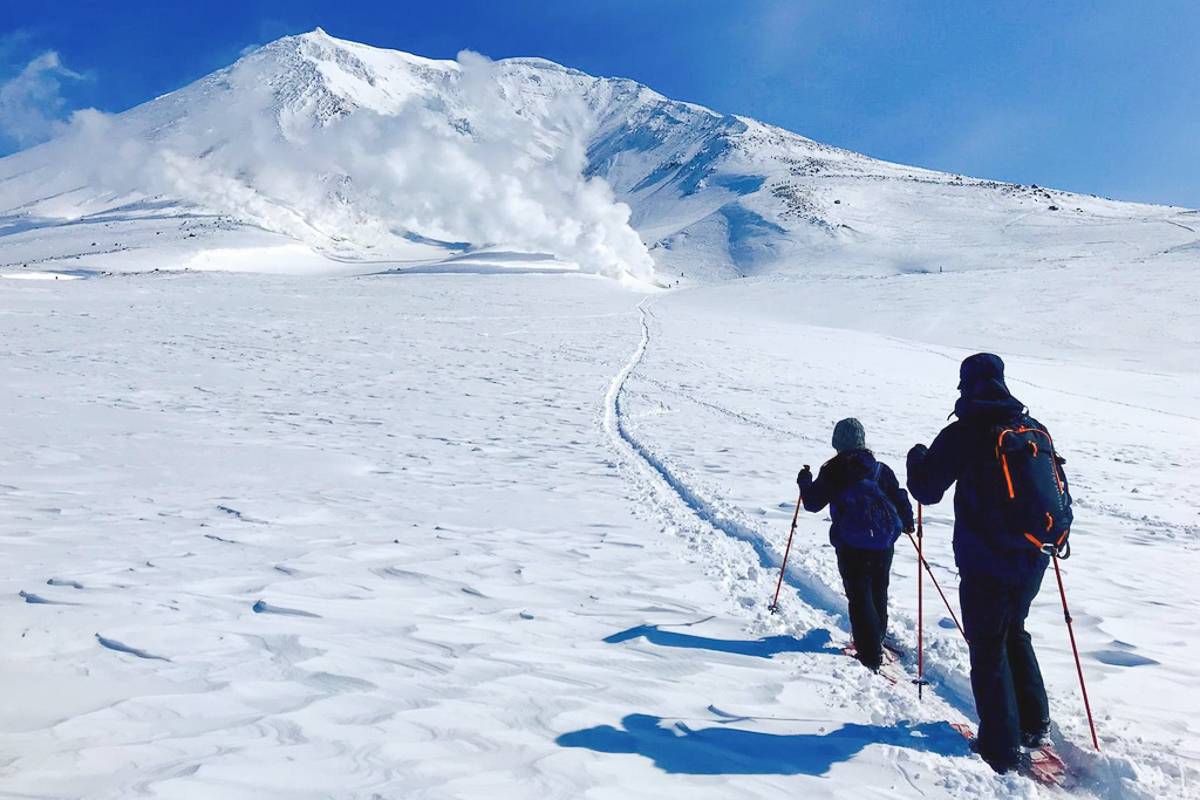
Snowshoeing on Mt Asahidake in Hokkaido
Hiking in Hokkaido
Once the winter’s snow has melted away, hiking is the best way to explore Hokkaido’s natural landscape. The locals are also keen hikers and there is a vast network of maintained hiking trails to explore, from quick jaunts up leafy peaks within Sapporo city to 80km traverses across the highest peaks of the Daisetsuzan Mountains.
Read this blogpost about my favourite Hokkaido hikes for some inspiration for your next hiking adventure.
The easy way to experience Hokkaido’s best hikes is to join one of our Hokkaido hiking tours. With a range of tours from 1 to 8 days, all fully guided with a maximum of 8 people, it’s a super easy and fun way to experience the best of Hokkaido’s great outdoors.
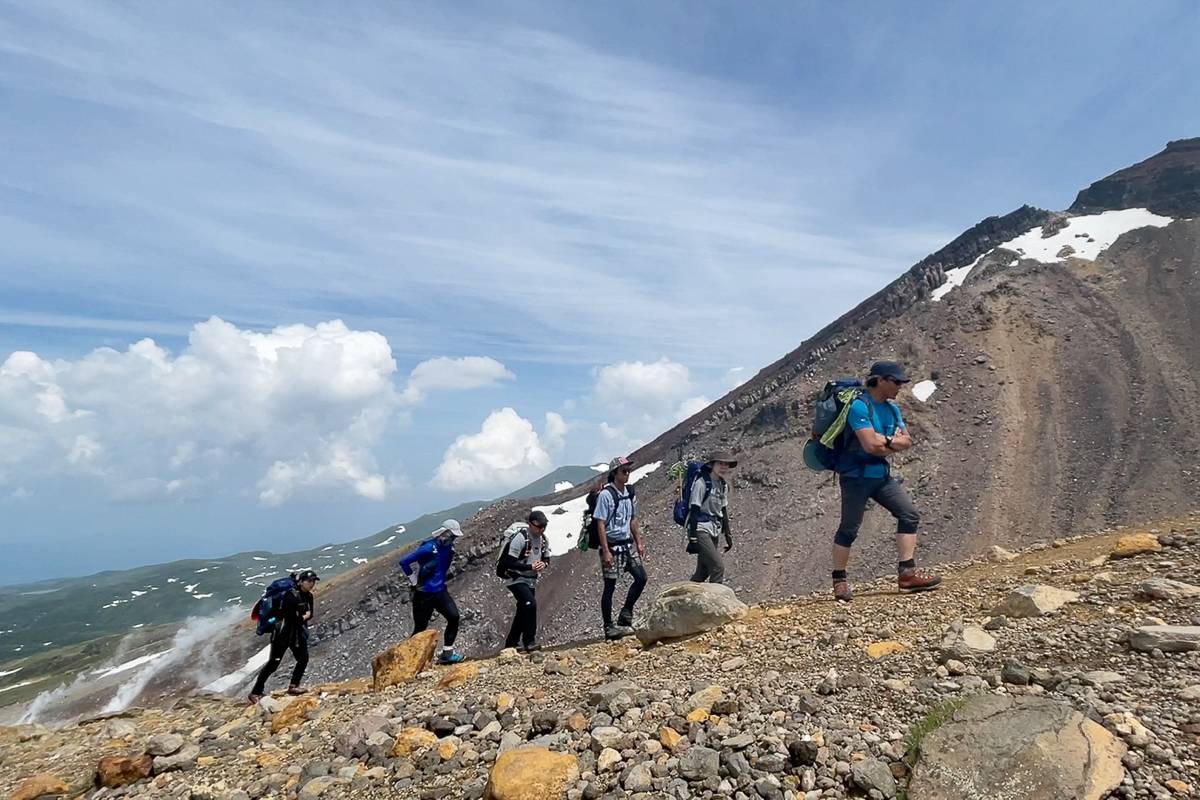
Guide and hikers climbing Mt Asahidake 
Hiking high on Mt Asahidake 
Hiking at Cape Sukoton, Rebun Island
Cycling in Hokkaido
Cycling around Hokkaido is one of my favourite ways to explore, you can cover enough distance under your own steam for the scenery to completely change. There is little traffic on the roads that thread through farmland, over silver birch lined passes and along lakeshores making Hokkaido a fantastic destination for cyclists.
Many of the rivers also have well-maintained cycling paths. While the rest of Japan swelters in the summer heat, the more mild temperatures in Hokkaido mean you can enjoy cycling throughout summer.
The rolling hills of Biei are a popular destination for cyclists, said to feel like a mini Tuscany. The pace of cycling is perfect for enjoying the patchwork farmland and the undulating terrain means the riding is never dull.
The first day of our Around Daisetsuzan 7 Day Cycling Tour travels through the Biei area and is a firm favourite with our guests.
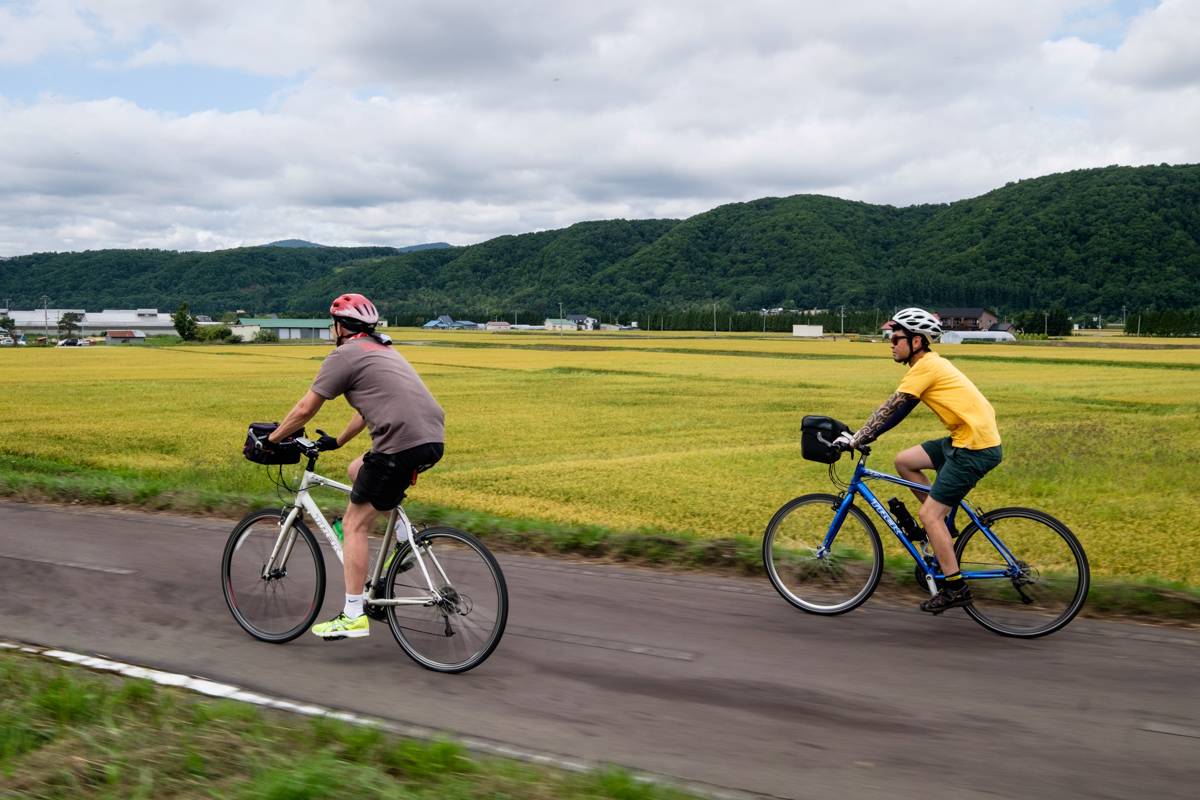
Cycling through the Hokkaido rural countryside 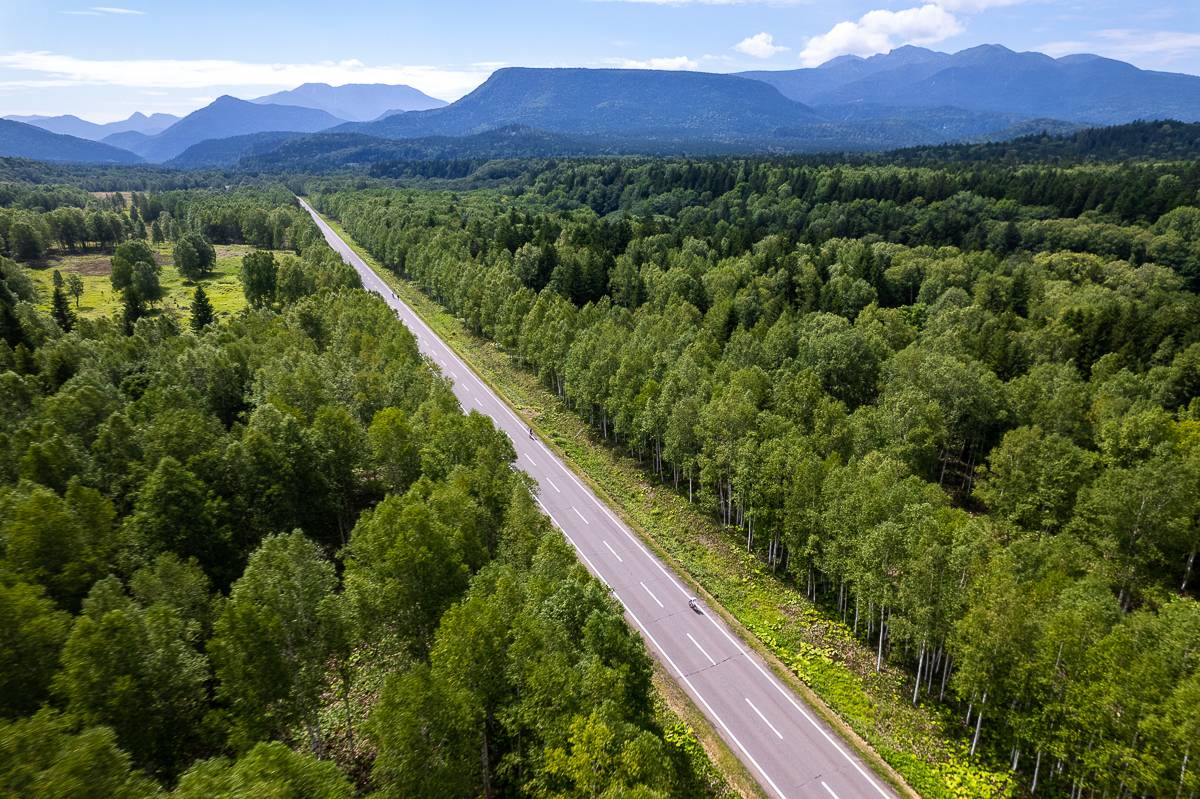
Cut through wild Daisetsuzan forest 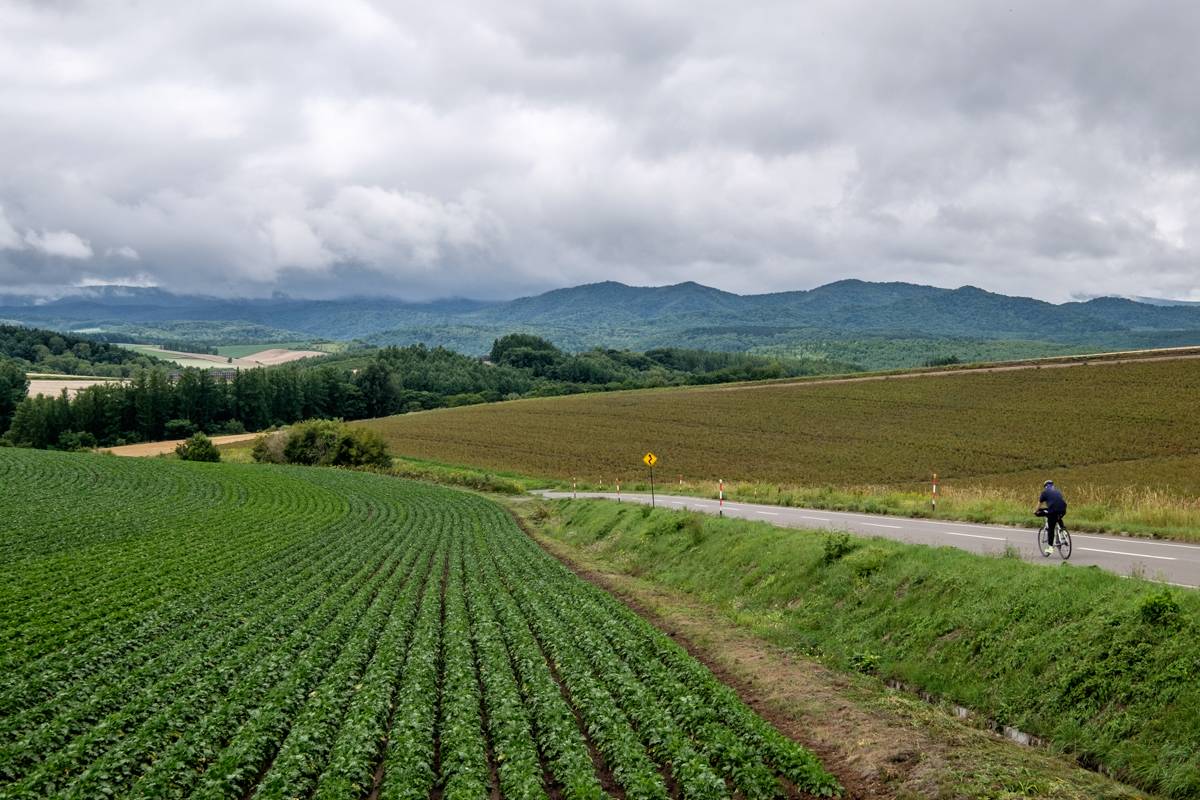
Cycling through Biei's rural scenery
Hot springs
I always stop off at an onsen, or hot spring, to soak away the aches after an adventure. But visiting an onsen can be an adventure in itself. As well as some fantastic hot spring inns nestled in the mountains, Hokkaido has several wild onsen hidden away in gorges or bubbling up on alpine plateaus.
We stop by lots of our favourite onsen on our Hokkaido hiking tours to rest our legs after a fun day out exploring our amazing outdoors. Bathing surrounded by nothing but a river and forest takes the relaxation to another level.
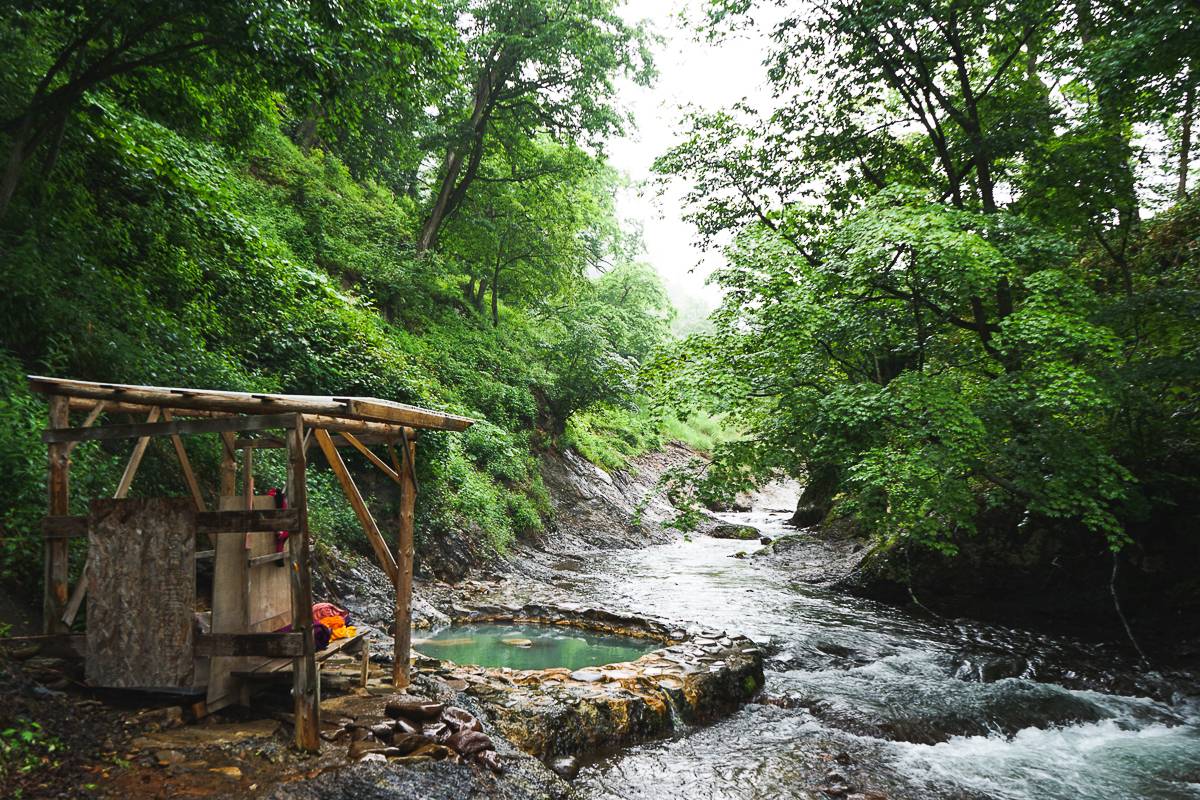
Shikanoyu Onsen at Shikaribetsukyo Gorge 
Hikers having a rest at Nakadake Onsen, Daisetsuzan NP
Water sports
You don’t just have to explore Hokkaido on land. The coastlines, lakes and rivers are perfect for exploring by paddle, in either a kayak or canoe. Canoeing through the Kushiro wetlands allows you to get up close to the wildlife. On a visit to Rishiri island, I went fishing from a sea kayak in the shadow of a volcano!
For those looking for more of a thrill, white water rafting is a great way to experience the wild rivers of Hokkaido. The mellower rivers are also popular with families and school groups on summer vacations.
There are lots of fun water adventures included on our tours, like canoeing on our Japan’s Far East 9 Day Wildlife & Adventure Tour.
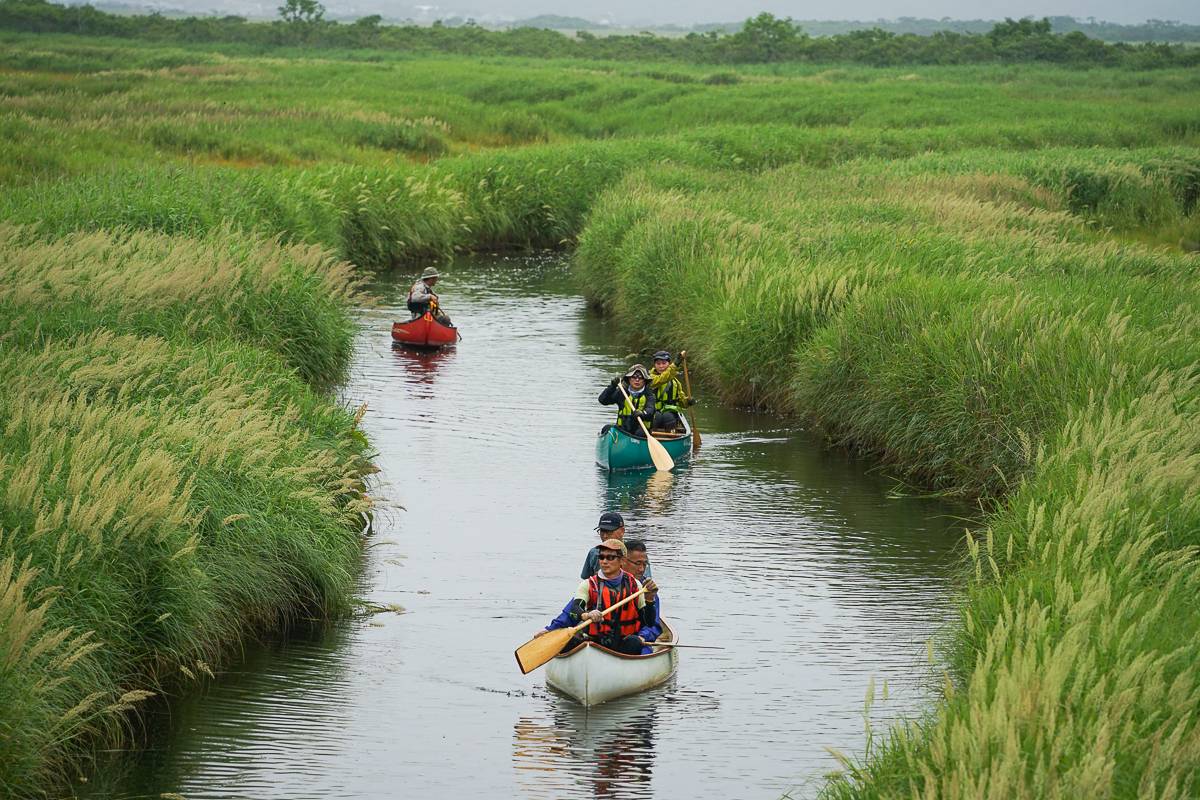
Canoeing through a calm wetland 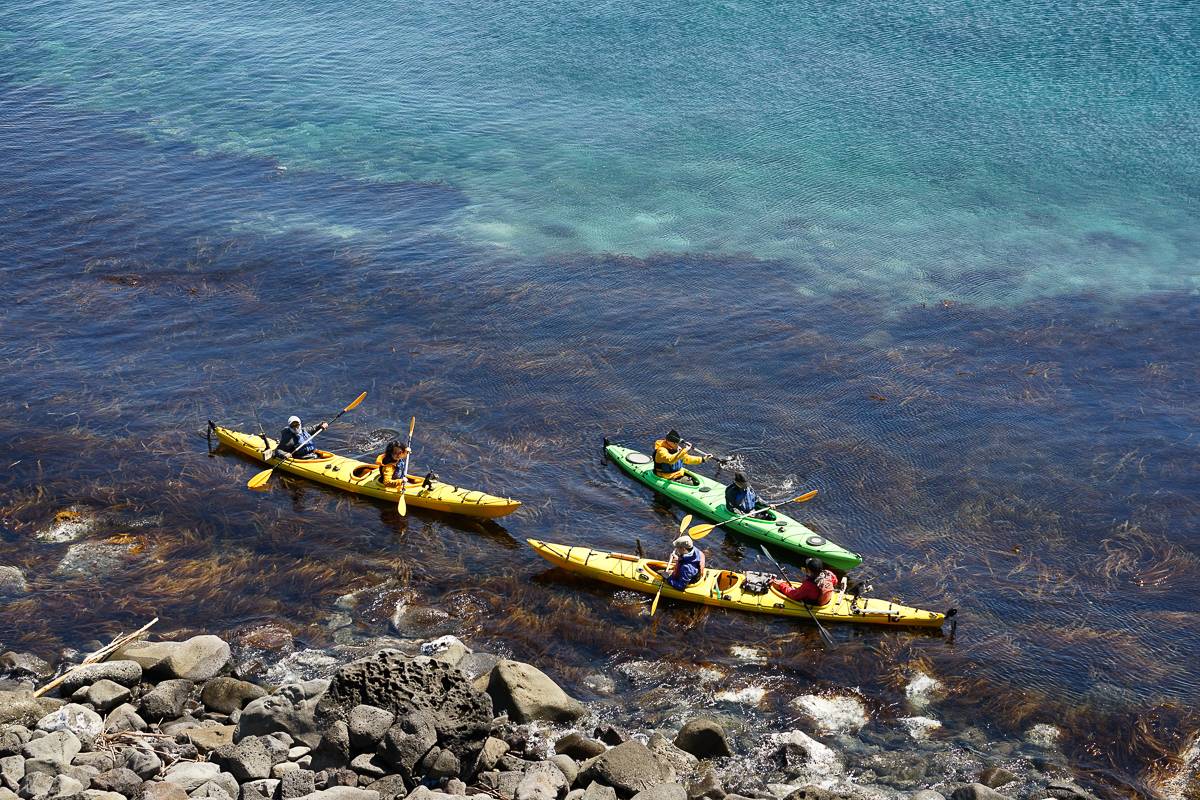
Sea Kayaking on Rishiri Island 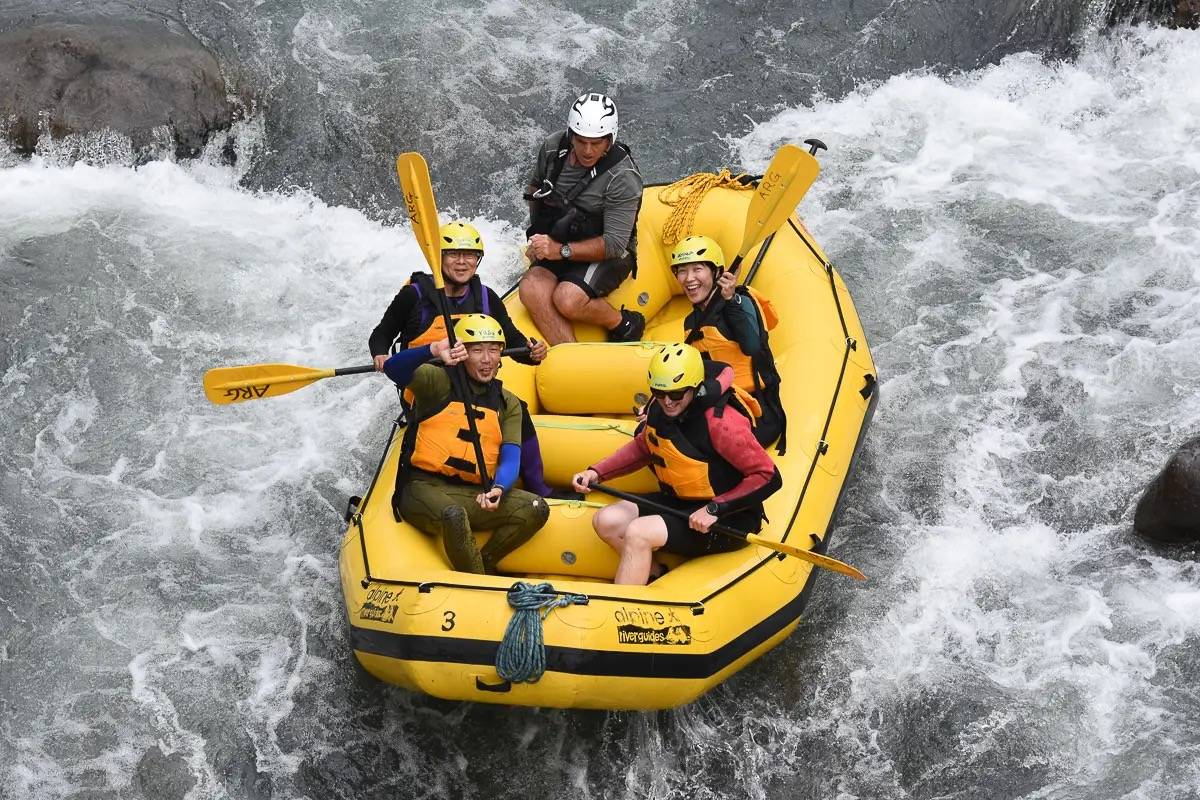
There's plenty to do in Hokkaido - like white water rafting!
Wildflower & Wildlife experiences
When the winter snow melts away, the mountains of Hokkaido come alive with carpets of whites, blues and yellows as the alpine flowers come into bloom. Some of these flowers are unique to Hokkaido, while others grow at lower elevations than elsewhere due to the cold climate and harsh winters. In fact, on Rebun island in the north of Hokkaido, you can see alpine flowers growing along the shoreline.
Hokkaido is also a wildlife lovers paradise, especially in the sparsely populated east. On a cruise along the coast of the Shiretoko national park, you might see Ezo Brown Bears hunting along the shoreline, whales breaching out to sea and large Steller’s sea eagles circling overhead. Birdwatchers also visit the island to see migratory eagles, resident cranes and rare mountain birds. I can remember being awestruck by two giant white-tipped eagles that took flight just in front of us on a hiking trail on Rebun.

A carpet of Aleutian Avens in the Daisetsuzan National Park 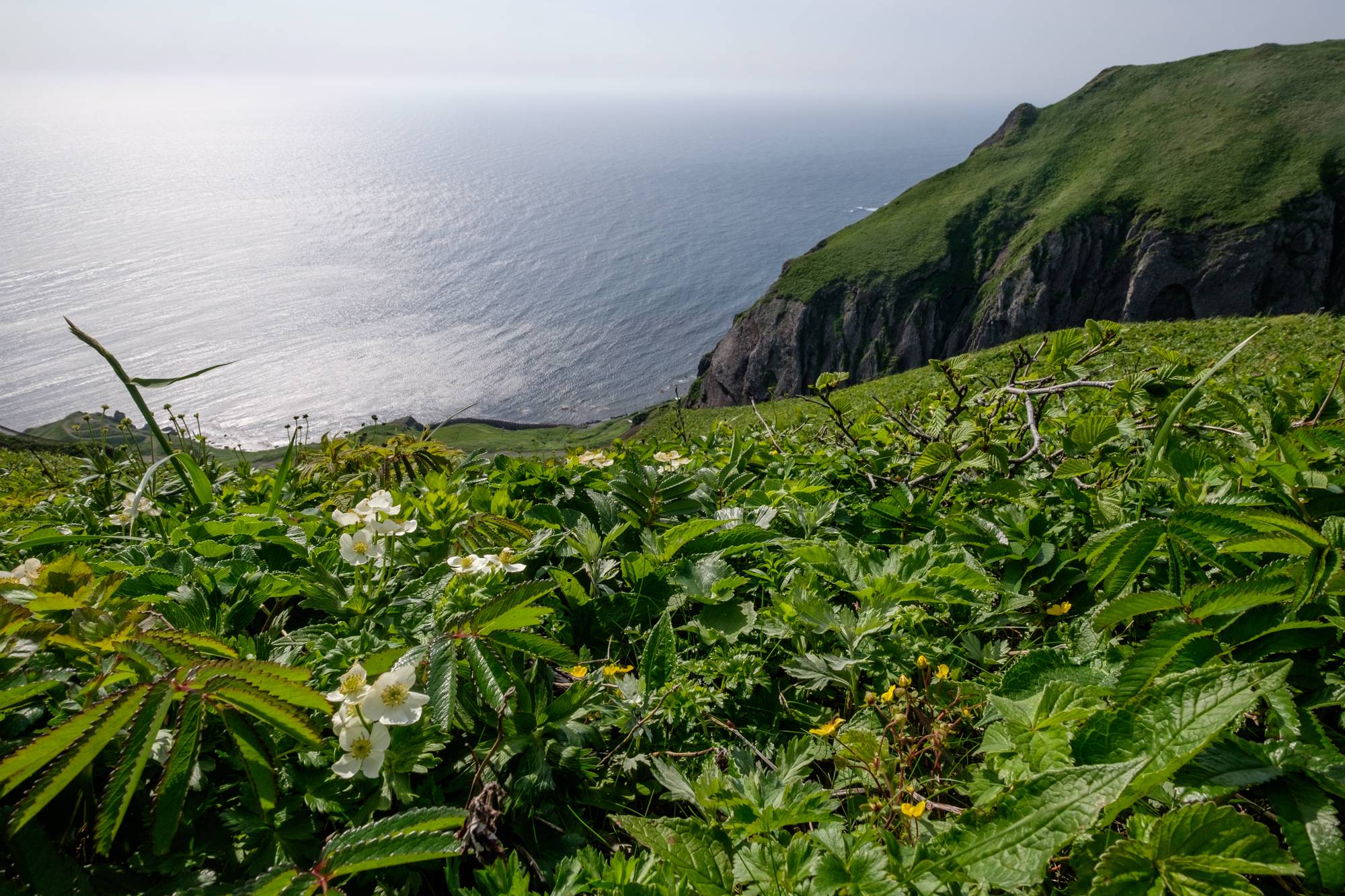
Alpine flowers with sea views on Rebun Island 
Whale watching off the Rausu coast, Shiretoko
Farm tours & visits
Hokkaido has a thriving farming industry, owing to the rich soil, clean water and plentiful land. It is well known for dairy produce and I have developed a soft-cream habit, stopping for one whenever I am traveling.
Some of the farms open up to allow guests to experience the farming first-hand. At a local farm, you can see buckwheat growing in the fields and learn how it is processed, before tucking into the final product, delicious soba noodles.
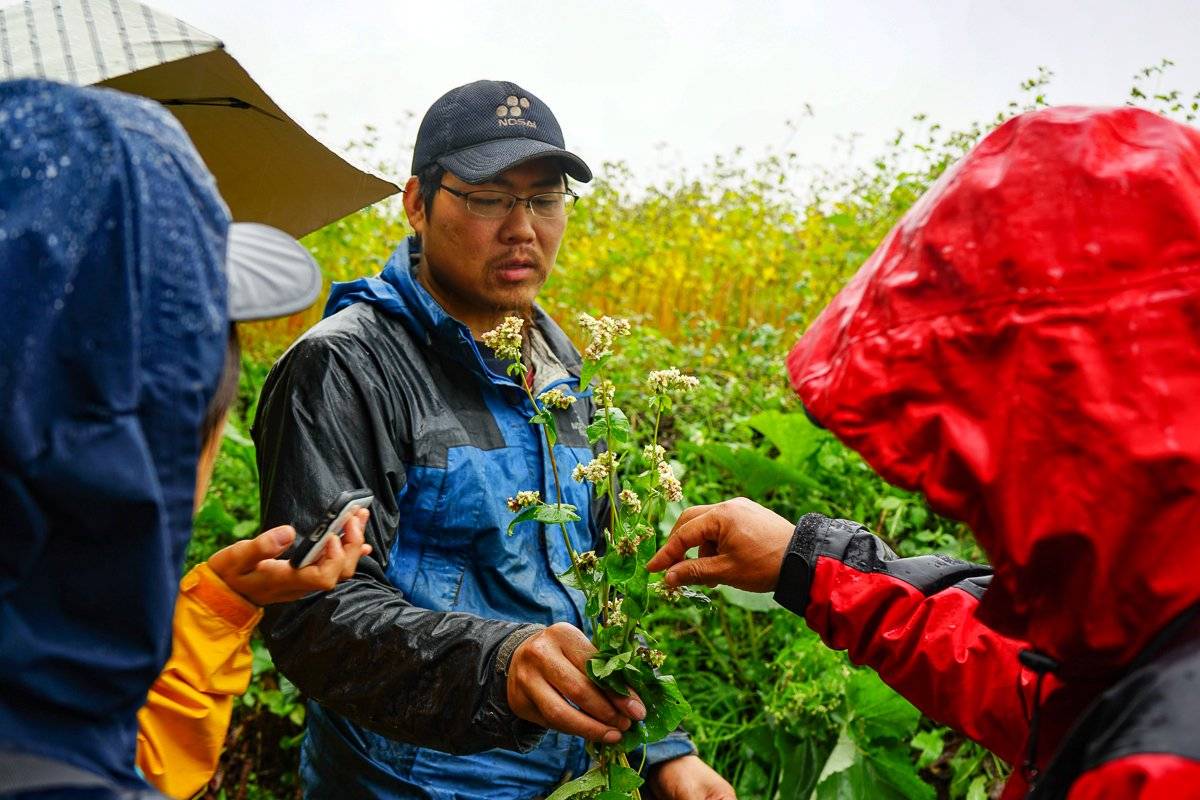
Buckwheat farm visit in Shintoku 
Lavender soft cream at Farm Tomita
Culture in Hokkaido #
Experiencing Japan’s history and culture is a highlight of any visit. Hokkaido’s history is unique within the history of Japan; it was not an official part of the country until the Meiji restoration in the 19th century. Before the island saw widespread settlement from the mainland, it was the domain of the Ainu, the indigenous people of Hokkaido, whose descendants are working to preserve their unique culture.

Hokkaido’s indigenous people – The Ainu
The Ainu are the original inhabitants of Hokkaido. They are thought to descend from Eurasian people who settled in Hokkaido during the ice age. Whilst they had close ties with the Jōmon people living in Japan, trading animals and goods, their culture evolved differently. They also speak their own language, the influence of which is seen in the names of Hokkaido’s towns, peaks and rivers.
They mostly settled along rivers and coastlines in villages known as Kotan and they lived in thatched houses known as Cise. You can see reconstructed Cise at Kamuy Kotan in Asahikawa, Akan Kotan near Lake Akan and Nibutani in the Hidaka region.
During the Meiji period, the Japanese government annexed Hokkaido forcing the Ainu to assimilate into Japanese society. Some Ainu descendants worked to preserve their culture, recording Yukar tales or setting up museums. The Kawamura Kaneto Ainu Museum in Asahikawa is one of the oldest museums being passed down through generations for over 100 years. I have found visits to the museum really eye opening.
In 2008, the Diet of Japan adopted resolutions to recognise the Ainu as a distinct indigenous people of Japan, followed by legislation in 2019 that officially recognized the Ainu as the indigenous people. Recently, in 2020, a national museum “Upopoy” was opened in Shiraoi to celebrate Ainu culture.

A traditional Ainu wood carving 
Visitin a traditional Ainu "cise" house 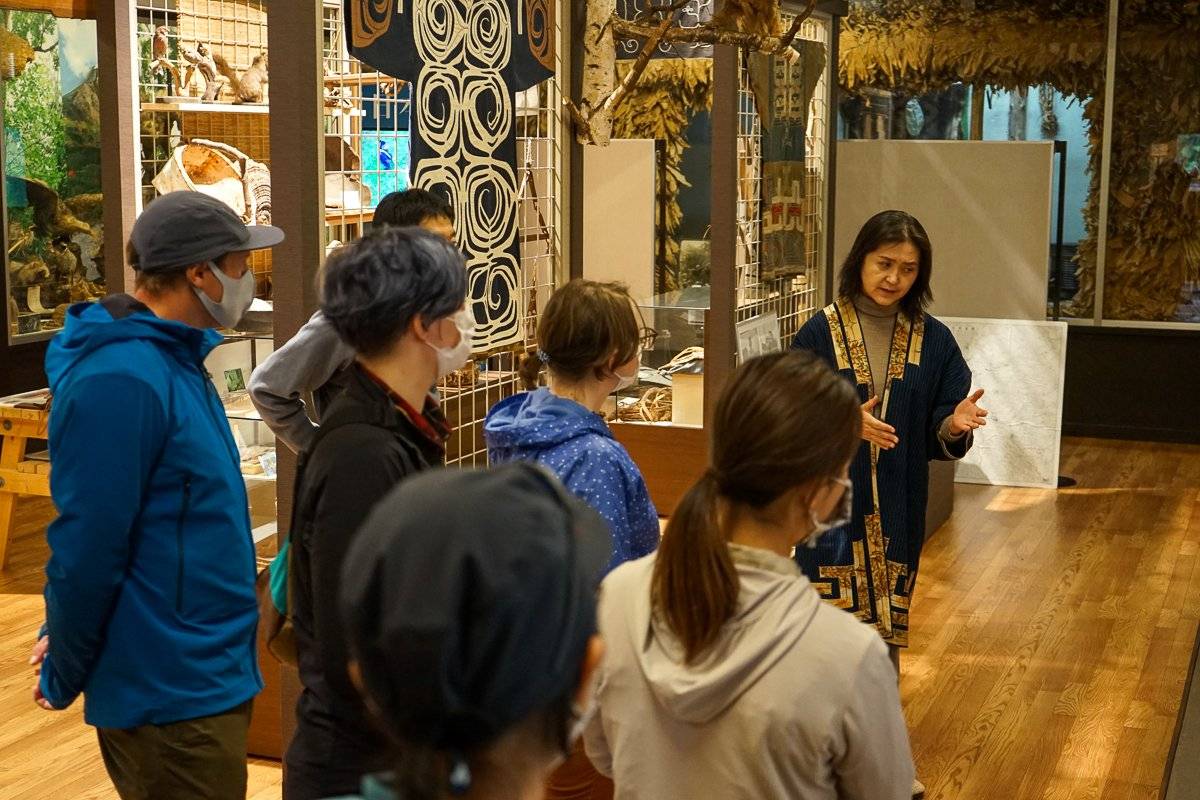
Visiting the Ainu museum in Asahikawa
Japanese culture
Despite differing origins and indigenous people, Japanese culture is still part of daily life here. There are Shinto shrines big and small on the island, including on shorelines and mountain tops. The largest shrine in Hokkaido, Hokkaido Jingu, sits in leafy Maruyama Park in the suburbs of Sapporo. It is worth visiting, especially in spring when the locals lay blankets under the pink cherry blossom trees and enjoy a Hanami party.
Summer is festival season and many towns hold festivals, usually centred around the local shrine. Higashikawa, Adventure Hokkaido’s base, holds its festival in late August with jubilant locals taking to the streets carrying a portable shrine.
Hot springs, or onsen, are also a big part of Japanese outdoor culture, with no day in the mountains finished until you’ve soaked in the natural water. Some of the best onsen I have visited are in Hokkaido; a well-planned trip will have you soothing the aches every night.
You will also experience Japanese hospitality, or Omotenashi, on your trip here. The pride local people take in looking after visitors leaves a lasting impression on visitors. I have had a local farmer go out of his way to help me find an ice cream shop. I have also seen a fellow hiking guide pull out a bag of juicy cucumbers on a hot hike, and a waitress comforting a crying baby so the parents can enjoy their meal.
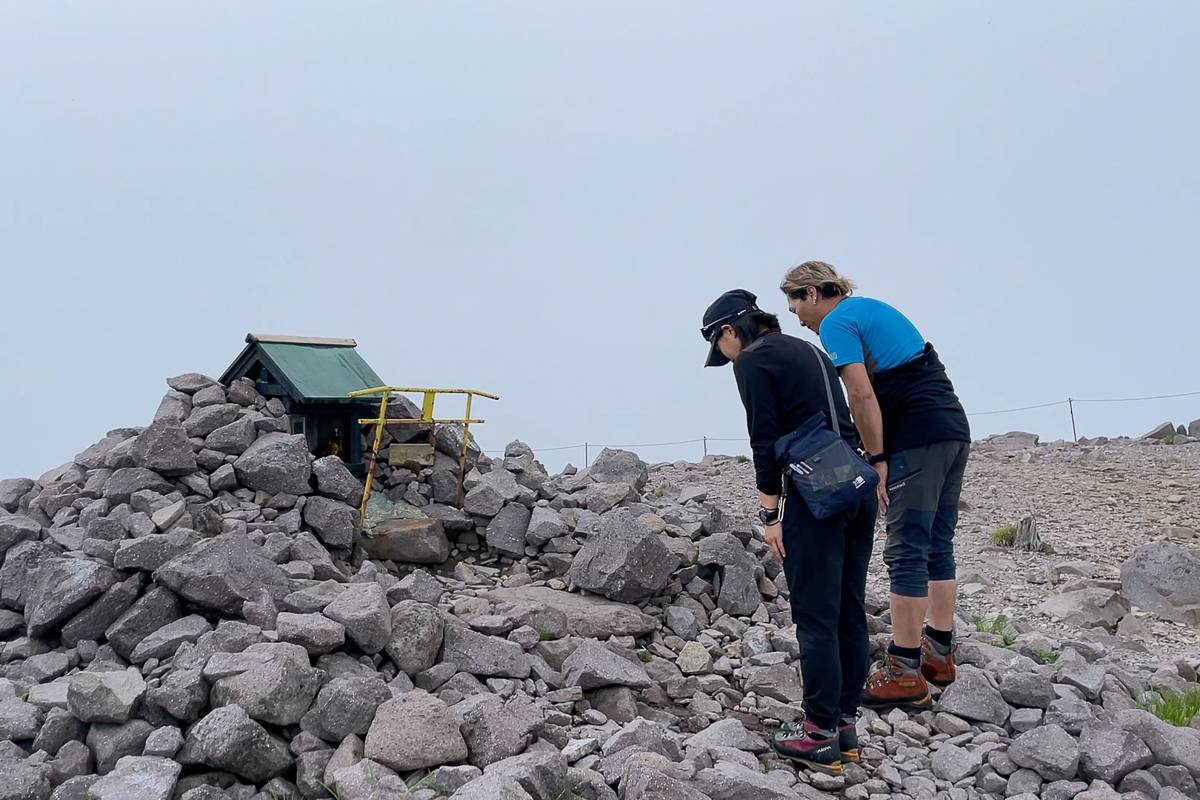
Mountain top shrine in Daisetsuzan 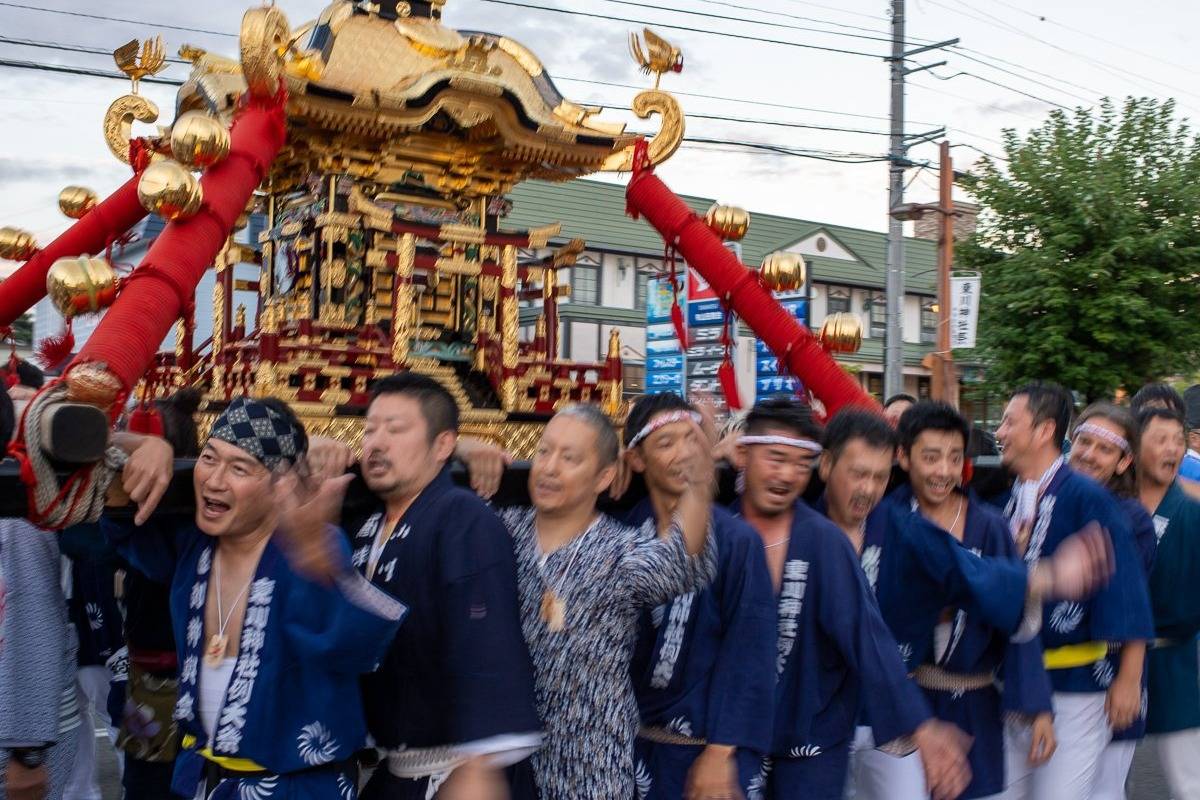
Summer festival in Higashigawa ©️ Yukinori Otsuka
Food in Hokkaido #
The food in Hokkaido is well known amongst the Japanese for being as fresh as you can get. A common theme with the food in Hokkaido is fresh local ingredients, be it fish caught in local waters or delicious soft cream served around the corner from the milking shed.
Seafood in Hokkaido
Within Japan, Hokkaido is best known for seafood. The cool waters around the island are rich with marine life with cold-water fish and shellfish thriving.
On Rishiri, in the north of Hokkaido, underwater natural springs supply clean volcanic filtered water to the Hotate sea scallops allowing them to grow rich and sweet free from contaminants. Rishiri and neighbouring Rebun are the only places you can try the local speciality of Hokke chan chan yaki; because the Hokke (Atka Mackerel) is caught locally it can be served unpreserved, one of my favourite things about visiting the islands.
Every year trout and salmon return to the rivers of Shiretoko being caught not just by the local fishermen but also the local bears, owls and eagles. The sea of Rausu on the east side of the Shiretoko peninsula is also rich with Uni, sea urchin, which is a must-try when you are in the area.
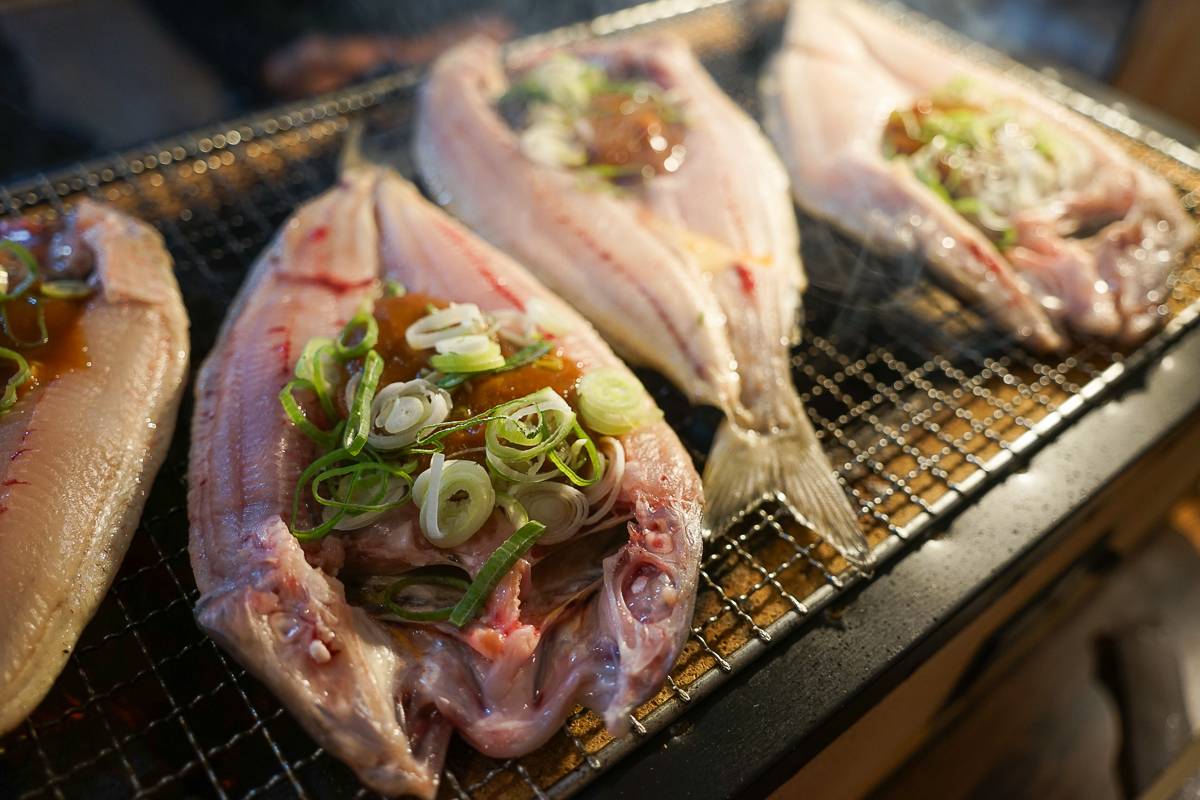
Grilled Hokke mackerel and miso sauce. A local Hokkaido delicacy. 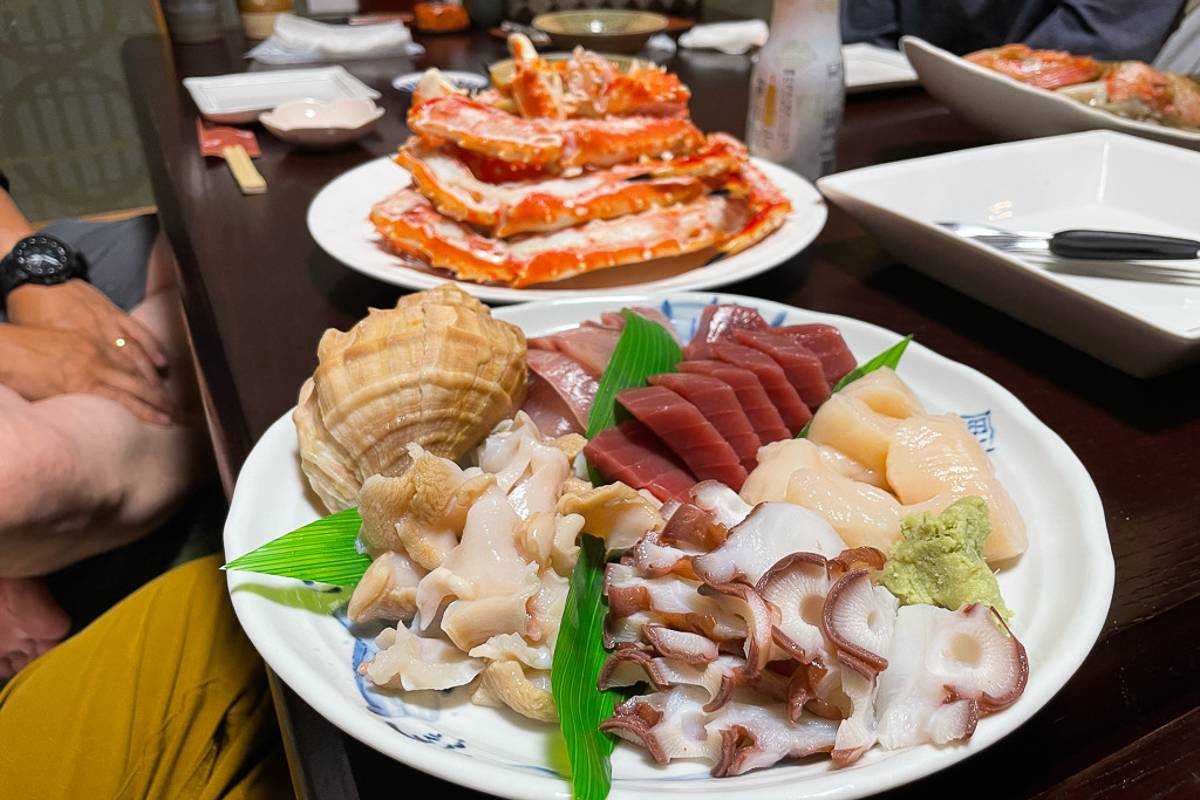
Seafood dinenr at a local izakaya
Hokkaido has the best dairy food in Japan
Dairy farming is the largest farming industry in Hokkaido, where the wide-open spaces allow for larger farms than those in mainland Japan. East Hokkaido is ranch country. Milk from the dairy farms around Yoroushi is second to none and is also used to make rich ice cream, perfect to cool down after a day hiking.
Cheese lovers will not be disappointed either. Good cheese can be hard to find further south, but the cheese factories in Furano, Shintoku and Shikaoi make a variety of great cheeses using local milk.
Wild foods in Hokkaido
As you venture into the mountainous areas of Hokkaido you will find sansai and shika-niku on some menus. Sansai roughly translates to mountain vegetables and is a coverall term for edible plants that grow wild in the mountains. The locals know the best spots, heading into the bush to pick them when the season is right. The Sansai tempura at Nakamuraya in Nukabira Onsen showcases the best of the current seasonal plants in a crispy batter.
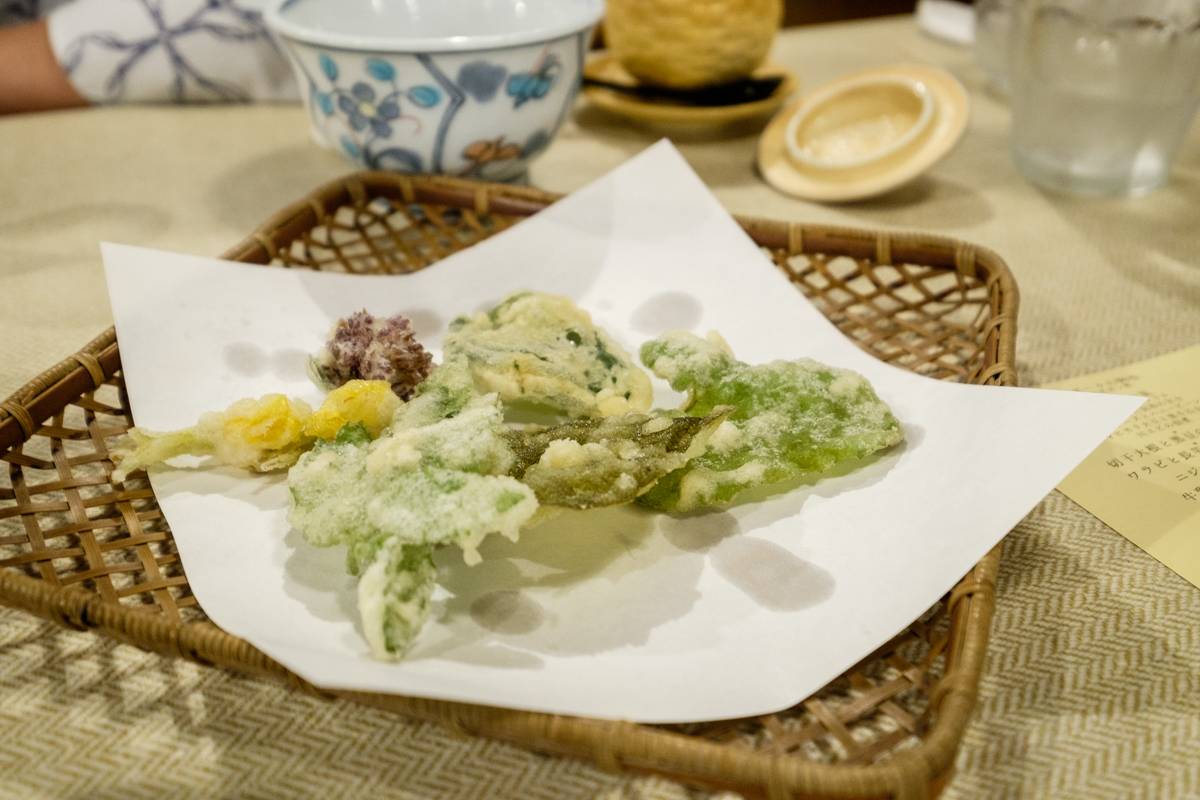
Wild vegetable tempura at Nakamuraya 
Venison dinner at Nakamuraya
Venison, or Shika-niku, is another speciality of the mountainous areas with large Ezo Shika deer populations. The meat is used in many ways, in curries or served as a steak, but my favourite is Nakamuraya (again) who serve tender roasted slices of the meat.
Hokkaido’s local speciality foods
The towns of Furano and Yubari in central Hokkaido are famous for their melons; the pick of the crop can fetch up to ¥2,500,000 (about US$22,000) at auction. Fortunately, you can also sample the sweet juicy melons for a lot less (~¥1000, US$9) at one of the farm shops throughout the area.
The clean water and high-quality rice found around Higashikawa and Asahikawa also give birth to some high-quality sake (Japanese rice wine). Otokoyama has roots running back to the Edo period. In the 1960s they selected the brewery in Asahikawa, first opened in 1887, to continue the historical lineage. The Monde Selection awarded Otokoyama a gold medal in 1977, the first awarded to a sake, and they have included it every year since.
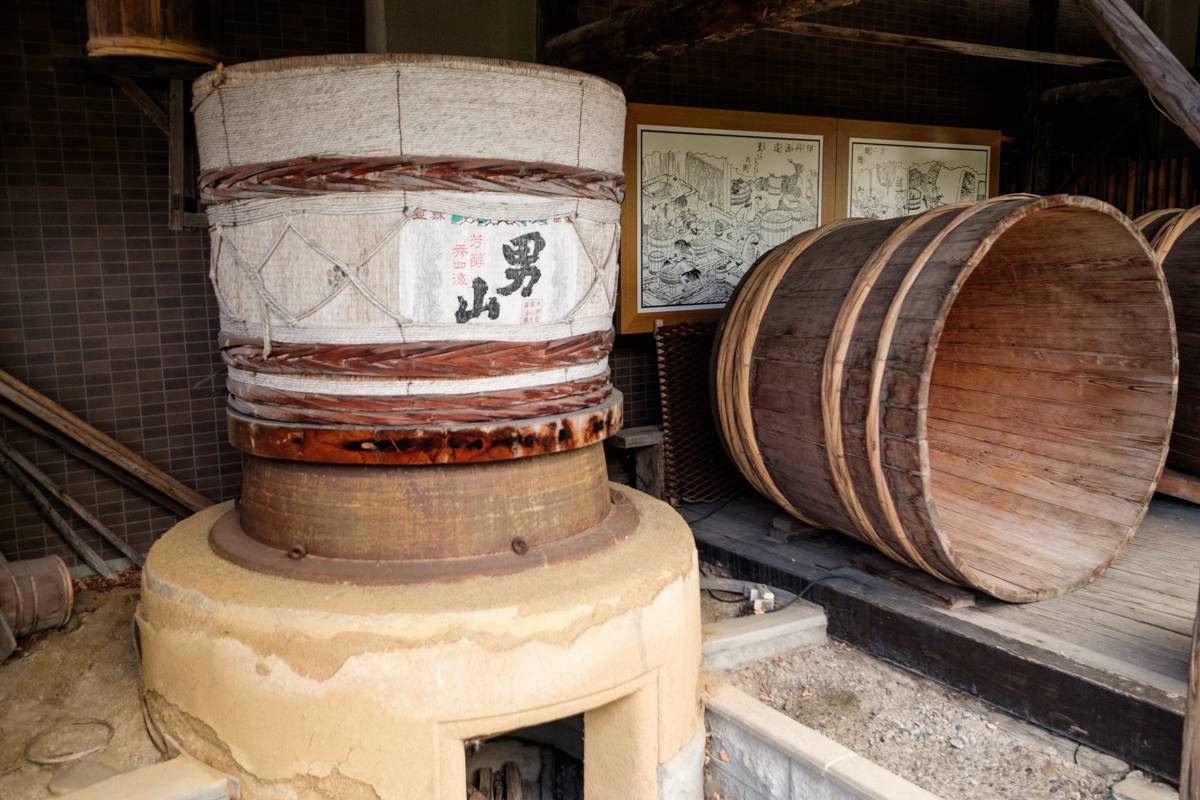
Wildlife in Hokkaido #
Hokkaido is rich with wildlife with a low human population and unique climate allowing the populations to thrive. You can see Ezo Sika (Deer) roaming the streets in smaller villages. Kitakitsune (Ezo Red Fox) and Tanuki (Racoon Dogs) are also common along our roads.
Head into the mountains and you might see a Higuma, a Brown Bear native to Hokkaido. They live all over the island with the largest population in Shiretoko National Park. I have also seen them at Kogen Onsen in the east of the Daisetsuzan Mountains; a small population lives there, feeding on the plants growing in the marshes.
The Blakiston’s Line is a faunal boundary line in the Tsugaru Strait between Hokkaido and mainland Japan. Many species found north of the line don’t live elsewhere in Japan. For example, the Higuma (Ezo Brown Bear) is closer genetically to the Brown Bears of Siberia than the Black Bears living in Honshu. The Japanese Pika (Ezo Nakiusagi) crossed from Russia during the ice age and are now found only in the high peaks of Hokkaido.
There are lots of wildlife experiences on all our tours, but if I had to recommend one tour for wildlife lovers it would be our Japan’s Far East 8 Day Wildlife & Adventure Tour. From whale watching, brown bears and rare birdlife, it’s a nature lovers dream!

Wild Japanese deer in Kiritappu 
Ezo brown bear in Shiretoko 
Northern Pika
Hokkaido’s Great Wilderness #
Keigetsu Omachi, a Japanese poet in the Meiji and Taisho periods, once wrote “To understand the height of a mountain, climb Mt Fuji. To understand the vastness of a mountain, climb the Daisetsuzan mountains.”
I think “Vast” is a word that well describes Hokkaido. It is the least densely populated prefecture in Japan, an impressive fact considering the capital Sapporo is the fifth-largest city with nearly two million residents. In comparison to the rest of Japan, much of Hokkaido remains wild and undeveloped outside of the towns. With its vast natural parks, big wildlife populations and small towns, Hokkaido is Japan’s last great wilderness.
As Japan’s northernmost prefecture, Hokkaido has a frontier feel. From Cape Soya, the northern tip of Japan, you can see across to the Sakhalin Peninsula in Russia on a clear day and there are Russian translations on the road signs in the nearby port town.
There are so many reasons to visit Hokkaido
The first time you visit will be full of unique and incredible experiences no matter where you visit. So why visit Hokkaido in particular?
The diversity of the natural landscape and outdoor activities. Nowhere else in Japan have I seen somewhere that packs as much adventure into one prefecture. Hokkaido is still a landscape dominated by volcanic mountains, the ocean, natural forest and the wildlife that live amongst them.
The best way to experience all Hokkaido has to offer is with local guides; the local people take great pride in sharing their homeland with visitors.
Here at Adventure Hokkaido we have drawn on the depth of experience of our local guides and are proud to offer you our Hokkaido Hiking, Cycling and Wildlife tours.
We look forward to seeing you here soon.
Ready to explore Hokkaido?
Join one of our tours and experience the best of the island